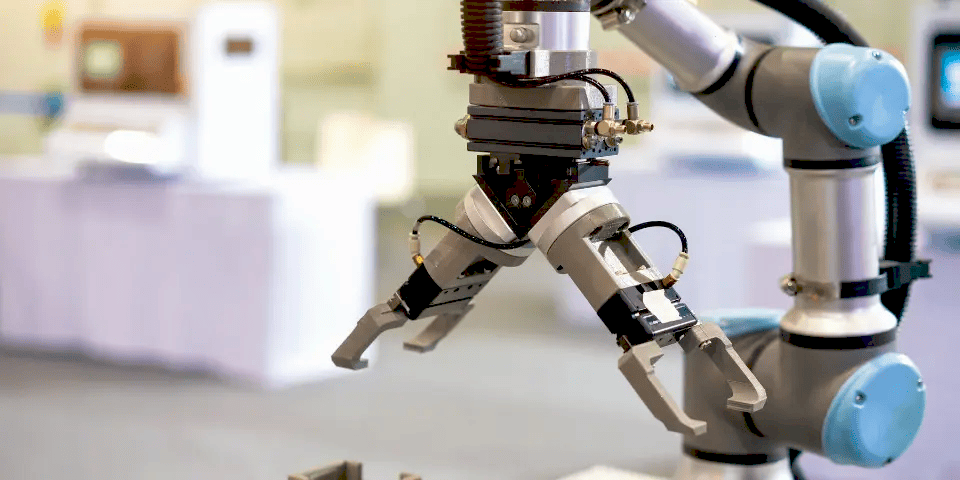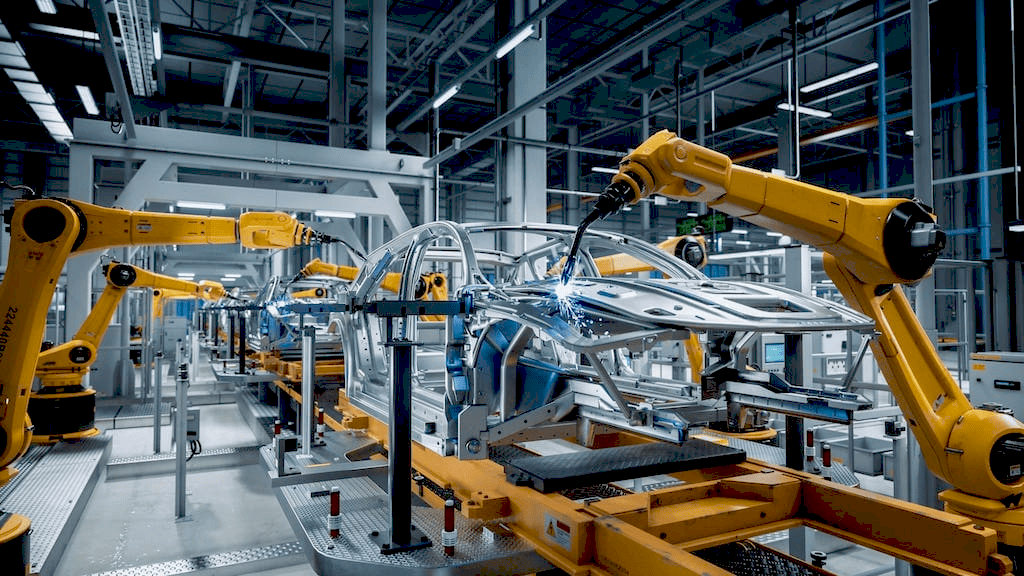Robot-Assisted Rehabilitation is revolutionizing the way patients recover from injuries and surgeries. This innovative approach integrates robotics into therapy to enhance the rehabilitation process, providing significant benefits for patients and healthcare providers alike. The use of robotic systems in rehabilitation not only improves the efficiency of therapy but also increases patient engagement and outcomes.
Rehabilitation robotics encompass a range of devices designed to assist patients in regaining mobility and strength. These robots can be programmed to provide tailored exercises, allowing for a personalized rehabilitation experience. By utilizing feedback mechanisms, robot-assisted rehabilitation devices can adapt to each patient’s progress, ensuring that therapy remains challenging yet achievable.
The benefits of using robots in therapy are numerous:
- Increased Efficiency: Robots can deliver consistent and precise movements, allowing patients to engage in repetitive training, which is crucial for recovery.
- Enhanced Motivation: The interactive nature of robotic devices often makes therapy sessions more engaging, encouraging patients to participate actively in their recovery.
- Data Collection: Robot-assisted rehabilitation devices can collect and analyze data on patient performance, enabling healthcare professionals to make informed decisions about treatment plans.
- Accessibility: These technologies can be used in various settings, including hospitals, outpatient clinics, and even at home, making rehabilitation more accessible to patients.
In summary, Robot-Assisted Rehabilitation is paving the way for a new era in recovery, offering a combination of advanced technology and personalized care. The integration of robotics into rehabilitation practices not only improves patient outcomes but also enhances the overall efficiency of the healthcare system. As technology continues to evolve, we can expect even greater advancements in robot-assisted therapies, making recovery more effective and accessible for everyone.
Case Studies: Success Stories in Robot-Assisted Rehabilitation
Robot-Assisted Rehabilitation has shown remarkable success in various clinical settings, demonstrating its effectiveness in improving patient outcomes. Numerous case studies highlight the positive impact of robotic therapy on recovery processes. One notable example involves stroke patients who utilized robotic exoskeletons during their rehabilitation. In a study conducted at a prominent rehabilitation center, patients who engaged in robot-assisted therapy showed a 30% improvement in mobility compared to those who received traditional therapy alone.
Another significant case study focused on spinal cord injury patients. The use of robotic gait training devices allowed these individuals to regain partial mobility. Patients reported increased motivation and engagement during sessions, which contributed to their overall progress. The data collected during these therapy sessions indicated a 40% increase in walking ability over a three-month period, showcasing the potential of robot-assisted rehabilitation in enhancing recovery.
Additionally, research conducted on patients recovering from orthopedic surgeries revealed similar positive outcomes. Implementing robotic systems in post-surgery rehabilitation led to faster recovery times and reduced pain levels. Patients expressed higher satisfaction rates with their rehabilitation experience, emphasizing the role of technology in making therapy more effective and enjoyable.
Technological Innovations in Rehabilitation Robots
Technological innovations in Robot-Assisted Rehabilitation are continuously evolving, leading to the development of advanced robotic devices that cater to various rehabilitation needs. These innovations focus on enhancing the capabilities of robots to provide tailored therapy experiences. For instance, the integration of artificial intelligence (AI) into rehabilitation robots allows for real-time adjustments based on patient performance. This personalization ensures that patients receive the appropriate level of challenge, maximizing their recovery potential.
Another significant advancement is the development of wearable robotic devices. These devices are designed to be lightweight and user-friendly, enabling patients to engage in rehabilitation exercises outside clinical settings. Wearable robots can monitor patients’ movements and provide feedback, allowing for a seamless transition from clinical therapy to home-based rehabilitation.
Furthermore, tele-rehabilitation is gaining traction, allowing healthcare providers to offer remote therapy sessions using robotic systems. This innovation expands access to rehabilitation services, especially for patients living in remote areas. Patients can engage in therapy from the comfort of their homes while receiving guidance and support from their therapists through video conferencing and robotic devices.
Patient Experience and Acceptance of Robotic Therapy
The patient experience in Robot-Assisted Rehabilitation is crucial for the overall success of therapy. Many patients report a positive acceptance of robotic therapy due to its interactive and engaging nature. The incorporation of gamification elements in robotic devices enhances motivation, encouraging patients to participate actively in their rehabilitation.
Moreover, studies indicate that patients appreciate the personalized feedback provided by robotic systems. The ability to track progress and receive immediate results fosters a sense of achievement, which is vital for maintaining motivation throughout the rehabilitation process. Patients often express that robot-assisted therapy feels less monotonous compared to traditional methods, leading to higher compliance rates.
However, some patients may initially have reservations about using robotic devices. Addressing these concerns through education and demonstration can significantly improve acceptance rates. Healthcare providers play a crucial role in guiding patients through the process, highlighting the benefits and addressing any fears associated with robotic therapy.
Future Trends and Developments in Rehabilitation Robotics
Robot-Assisted Rehabilitation is evolving rapidly, and several future trends are expected to shape its development significantly. The integration of advanced technologies will further enhance the effectiveness and accessibility of robotic therapy. One prominent trend is the increasing use of artificial intelligence (AI) in rehabilitation robots. AI can analyze patient data in real time, allowing robots to adjust therapy sessions based on individual progress and needs. This level of customization will lead to more effective rehabilitation strategies, ensuring that patients receive the right amount of challenge to foster recovery.
Another trend is the growing adoption of tele-rehabilitation. This approach allows patients to participate in robotic therapy sessions remotely, which is especially beneficial for those who cannot travel to rehabilitation centers. Tele-rehabilitation not only expands access to robotic therapy but also enables healthcare providers to monitor patient progress from a distance, providing timely interventions when necessary.
Wearable robotic devices are also expected to gain popularity. These devices can facilitate rehabilitation in real-world environments, allowing patients to practice movements in their daily lives. This transition from clinical settings to home environments can significantly enhance the rehabilitation process, as patients can practice skills in a more natural context.
Moreover, collaborative robots, or cobots, are emerging as a vital component in rehabilitation. Cobots can work alongside therapists to assist patients during therapy sessions, providing additional support and guidance. This collaboration enhances the overall rehabilitation experience and allows therapists to focus on other critical aspects of patient care.
In conclusion, the future of Robot-Assisted Rehabilitation is promising, with continuous advancements set to improve patient outcomes. The integration of AI, tele-rehabilitation, wearable devices, and collaborative robots will create a more dynamic and effective rehabilitation landscape. As these technologies develop, they will undoubtedly transform how rehabilitation is delivered, making it more personalized and accessible for patients worldwide.
Challenges and Limitations of Robot-Assisted Therapy
Despite the many benefits of Robot-Assisted Rehabilitation, there are also challenges and limitations that need to be addressed. One significant challenge is the high cost of robotic systems. The initial investment required for acquiring and maintaining advanced robotic devices can be prohibitive for many healthcare facilities. This financial barrier limits access to robot-assisted therapy for some patients, particularly in underserved areas.
Additionally, the complexity of robotic systems can pose challenges for healthcare providers. Training staff to effectively use and maintain these devices is essential for successful implementation. Without proper training, the potential benefits of robotic therapy may not be fully realized, leading to suboptimal patient outcomes.
Another limitation is the variability in patient acceptance of robotic therapy. Some patients may feel intimidated or uncomfortable with robotic devices, which can hinder their participation in rehabilitation. Addressing these concerns through education and demonstration is crucial for improving patient acceptance and engagement.
Furthermore, the integration of robotic therapy into existing rehabilitation protocols requires careful consideration. It is essential to ensure that robotic devices complement traditional therapeutic approaches rather than replace them. A balanced approach that combines the strengths of both methods will yield the best results for patients.
In summary, while Robot-Assisted Rehabilitation offers numerous advantages, there are challenges and limitations that must be addressed. By focusing on reducing costs, providing adequate training, improving patient acceptance, and integrating robotic therapy into existing protocols, the full potential of robot-assisted rehabilitation can be realized.
Conclusion: The Future of Rehabilitation with Robotics
In conclusion, Robot-Assisted Rehabilitation represents a significant advancement in the field of rehabilitation therapy. The benefits of this innovative approach, including increased efficiency, enhanced motivation, and improved patient outcomes, highlight its potential to transform recovery processes. As technology continues to evolve, the future of rehabilitation will be characterized by personalized, accessible, and effective robotic therapy.
Future trends, such as the integration of AI, tele-rehabilitation, and wearable devices, will further enhance the effectiveness of robot-assisted therapy. However, addressing challenges such as costs, staff training, and patient acceptance is crucial for widespread adoption. By overcoming these barriers, healthcare providers can ensure that robot-assisted rehabilitation becomes an integral part of the recovery journey for patients.
Ultimately, the ongoing development of robotics in rehabilitation holds great promise for improving the quality of care and enhancing the lives of individuals recovering from injuries or surgeries. Embracing these technological advancements will pave the way for a brighter future in rehabilitation, where patients can achieve their recovery goals more effectively and efficiently.





